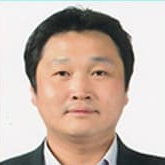Concrete in Structural Engineering: Fabrication and Mechanical Behavior ‖
A special issue of Materials (ISSN 1996-1944). This special issue belongs to the section "Construction and Building Materials".
Deadline for manuscript submissions: 10 August 2024 | Viewed by 11167
Special Issue Editors
Interests: concrete and composite materials; fracture mechanics; finite element analysis; reinforced concrete design; seismic qualification
Special Issues, Collections and Topics in MDPI journals
Interests: seismic design; smart structures; concrete materials; reinforced concrete; structural experiments; performance evaluation; finite element analysis
Special Issues, Collections and Topics in MDPI journals
Special Issue Information
Dear Colleagues,
This Special Issue aims to publish papers that advance the field of concrete materials and structures through the approach of numerical analyses and experimental tests. The proposed approaches should include new or enhanced insights into constructions for reinforced concrete, pre-stressed concrete, cementitious material fabrication, and the mechanical behavior of concrete members.
Given the comprehensiveness of the suggested topic, we encourage you to send manuscripts containing scientific findings within the broad field of concrete research, which can be combined into the following topics: material effects, material behaviors, structural analysis, seismic design, earthquake engineering, structural monitoring, composite structures, lab and field testing, hazard reduction systems, and smart structures. Both theoretical and practice-oriented papers, including case studies and reviews, are also encouraged.
Prof. Dr. Seong Tae Yi
Prof. Dr. Jong Wan Hu
Guest Editors
Manuscript Submission Information
Manuscripts should be submitted online at www.mdpi.com by registering and logging in to this website. Once you are registered, click here to go to the submission form. Manuscripts can be submitted until the deadline. All submissions that pass pre-check are peer-reviewed. Accepted papers will be published continuously in the journal (as soon as accepted) and will be listed together on the special issue website. Research articles, review articles as well as short communications are invited. For planned papers, a title and short abstract (about 100 words) can be sent to the Editorial Office for announcement on this website.
Submitted manuscripts should not have been published previously, nor be under consideration for publication elsewhere (except conference proceedings papers). All manuscripts are thoroughly refereed through a single-blind peer-review process. A guide for authors and other relevant information for submission of manuscripts is available on the Instructions for Authors page. Materials is an international peer-reviewed open access semimonthly journal published by MDPI.
Please visit the Instructions for Authors page before submitting a manuscript. The Article Processing Charge (APC) for publication in this open access journal is 2600 CHF (Swiss Francs). Submitted papers should be well formatted and use good English. Authors may use MDPI's English editing service prior to publication or during author revisions.
Keywords
- nano concrete
- FRP concrete
- self-healing concrete
- multi-functional concrete
- reinforced concrete
- pre-stressed concrete
- composite materials
- cementitious materials
- concrete fabrication
- mechanical behavior
- concrete design
- concrete test
- fracture mechanics
- concrete frame (building)







